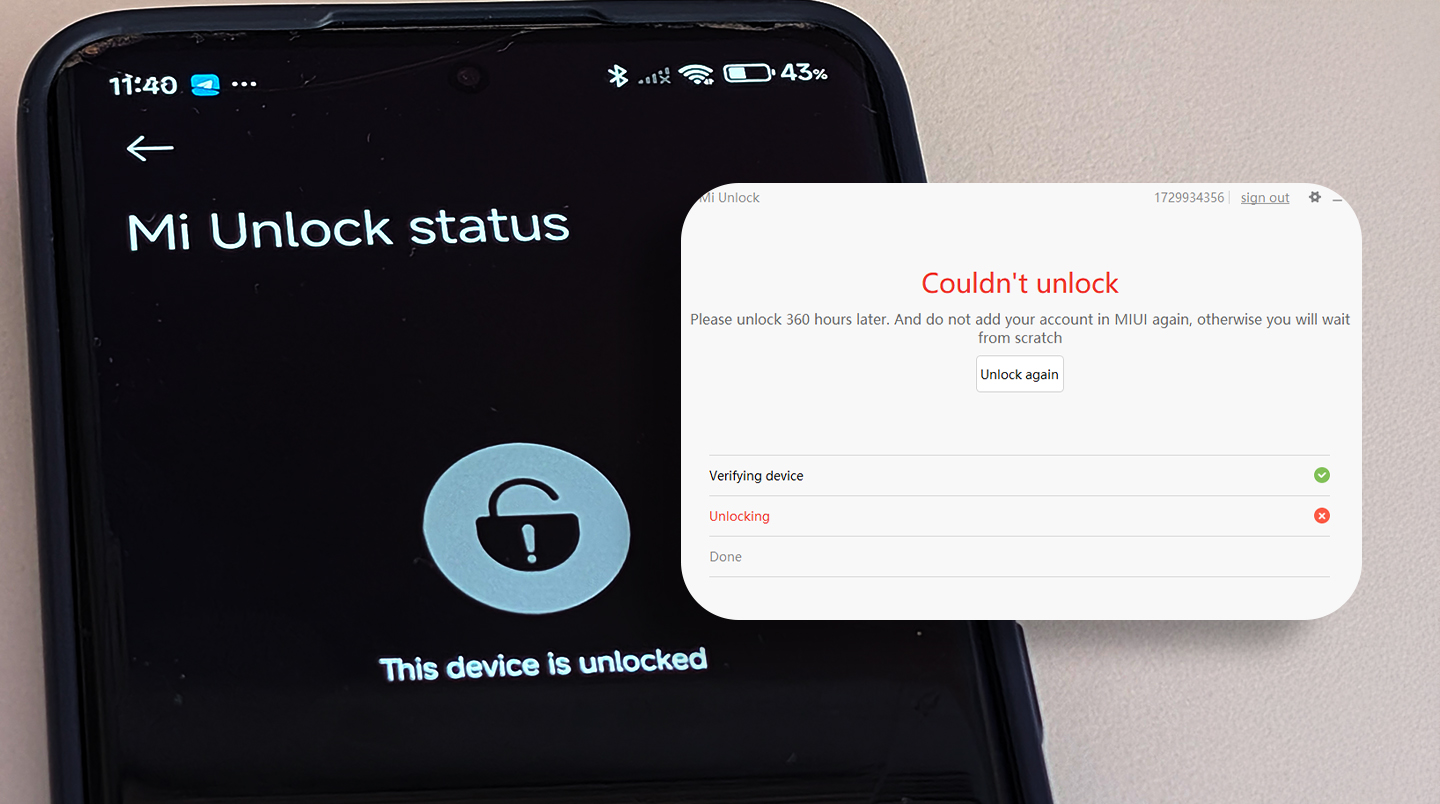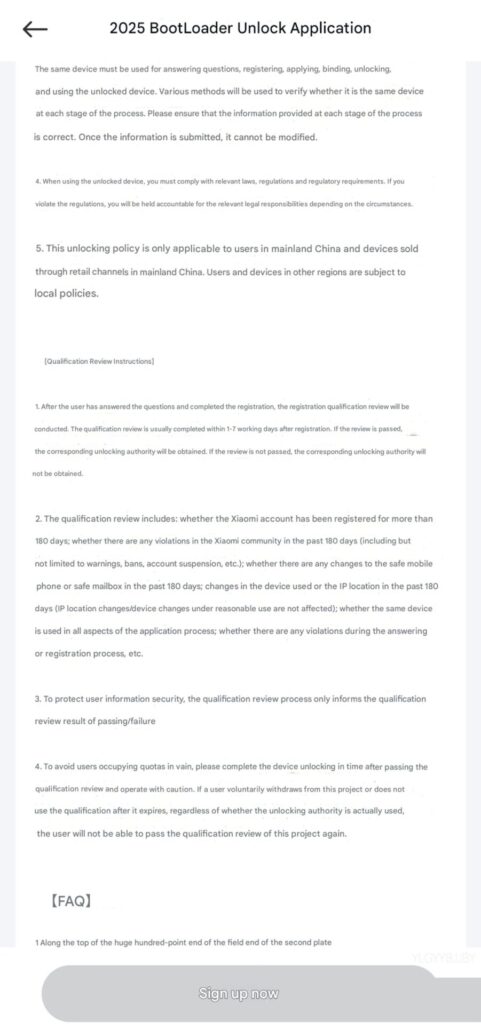Xiaomi has added an additional level of restriction to its bootloader unlocking mechanism, effectively making it much more challenging for users to obtain unlocking permission. In its most recent update to its Bootloader Unlocking Application Rules posted on February 6, 2025, a qualifying review that considers behavior in the past is added, in addition to current behavior, in deciding whether a device can be unlocked. Users with any infraction in the past 180 days can no longer have their device unlocked.
Note: These changes only for China.
This move is in a direction of smartphone manufacturers tightening policies for bootloader unlocking in consideration for security concerns. Once one of the most unlocked companies, Xiaomi has increasingly placed stricter restrictions, following in the footsteps of larger companies that discourage device tweaks.
What’s new in Xiaomi’s Bootloader Unlocking Process?
1. Compulsory Qualification Check
Users looking to unlock the bootloader of their Xiaomi device will have to go through a qualification review following a completion of questions and a successful registration. It will normally take 1 to 7 working days for them, and then they will receive a grant of unlocking permissions or will have access refused to them.
The qualification review is designed to prevent abuse and confirm that users meet stricter security requirements for Xiaomi. Unlike when users could apply and then simply wait for approval, with the new system, a careful review of activity and account is conducted.
2. Stringent Qualification Requirements
Several new requirements have been added in order to evaluate whether a user can be unlocked:
- The Mi account is at least 180 days old. Any newer accounts will be disqualified automatically.
- Users must have a 180-day record in the Xiaomi Community with no bans, warnings, or account suspensions. Any infraction, such as warnings, bans, and suspensions, will result in rejection of the application.
- No recent security-sensitive changes to the Xiaomi account. If a user has changed their registered phone number, email, or linked security settings within the past 180 days, their request might be denied.
- Device and IP address tests for stability. In case a user keeps switching between devices or logging in from new locations in a suspicious manner, their app can be flagged for review.
- The entire unlocking procedure will have to be conducted on one and the same device. That is, completing the survey, registering, applying, binding, and unlocking will have to be completed using one and the same phone.
These conditions introduce an additional layer of verification in an attempt to stop fraud and unauthorized bootloader unlocking.
3. No Second Chances for Unused Unlocking Permits
Another major reform is that users who don’t follow through with completing unlocking following approval won’t have an opportunity to reapply. In case a user withdraws himself/herself voluntarily from unlocking, or doesn’t use granted permission when it runs out, then such a user forfeits requesting an additional unlock forever
This is a significant improvement over the older system, under which users could reapply in case they missed an unlocking window. Users have to follow through soon after approval by Xiaomi.
Xiaomi’s Progressive Stringency in Unlocking Policies for Bootloader
This update isn’t a one-time move but a part of a grand scheme in Xiaomi to lock down bootloader in the future.
- January 1, 2025: Xiaomi adopted a new policy of granting only one device a year per account for unlocking bootloaders—a significant reduction from its previous three a year allowance.
- Mid-January 2025: Xiaomi imposed a 14-day unlocking period, with a 336-hour timeline for completing the entire process after approval. Not timely completion led to loss of permission.
With the most current 180-day review for violations and stricter application process, it is becoming increasingly difficult for users to unchain their gadgets.
Why is Mi Unlocking restricted?
There are several reasons why Xiaomi opted to lock down its bootloader:
- Security Problems – Unlocked bootloaders circumvent most of a device’s native security features, and it can become a soft target for malware, unauthorized modifications, and even information theft.
- Anti-Piracy Features – Users root their device in a bid to download custom ROMs and remove Xiaomi’s in-house software. Xiaomi most likely doesn’t want such activity in a move to protect its ecosystem and services.
- Flashing Market Decline – The marketplace for custom ROM and third-party firmware is in retreat, with native HyperOS offering a level of customizability not previously seen in its releases. With fewer buyers in demand for bootloaders to be unlocked, having stricter controls could make sense for the company.
- Regulatory Compliance – Certain regions have started imposing stricter cybersecurity legislation, and it is possibly impacting Xiaomi’s move to restrict bootloader unlocking for increased compliance.
For Xiaomi owners who appreciate custom ROMs, kernel tweaks, and third-party firmware, these new unlocking restrictions will be a real stumbling block. With a multi-step unlocking process, a clean record for 180 days and a once-only approval scheme, unlocking a Xiaomi bootloader is one of the most restricted processes in smartphone-dom. Users who will have to unblock their device will now have to plan beforehand, have a positive-standing Xiaomi account, and be willing to go through with unblocking at first opportunity—since repeat unblocks no longer count.


HyperOS Downloader
Easily check if your phone is eligible for HyperOS 2.0 update!






